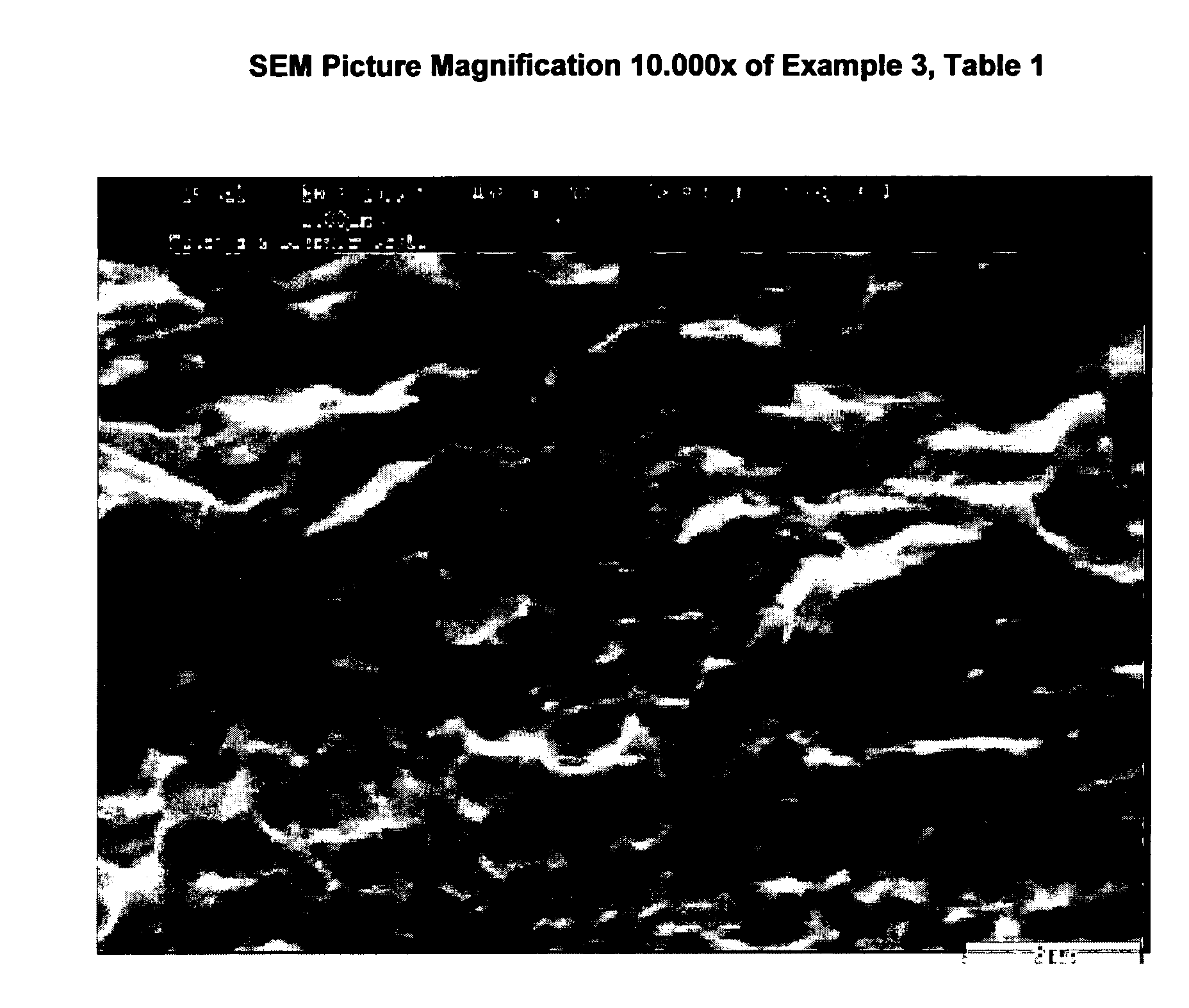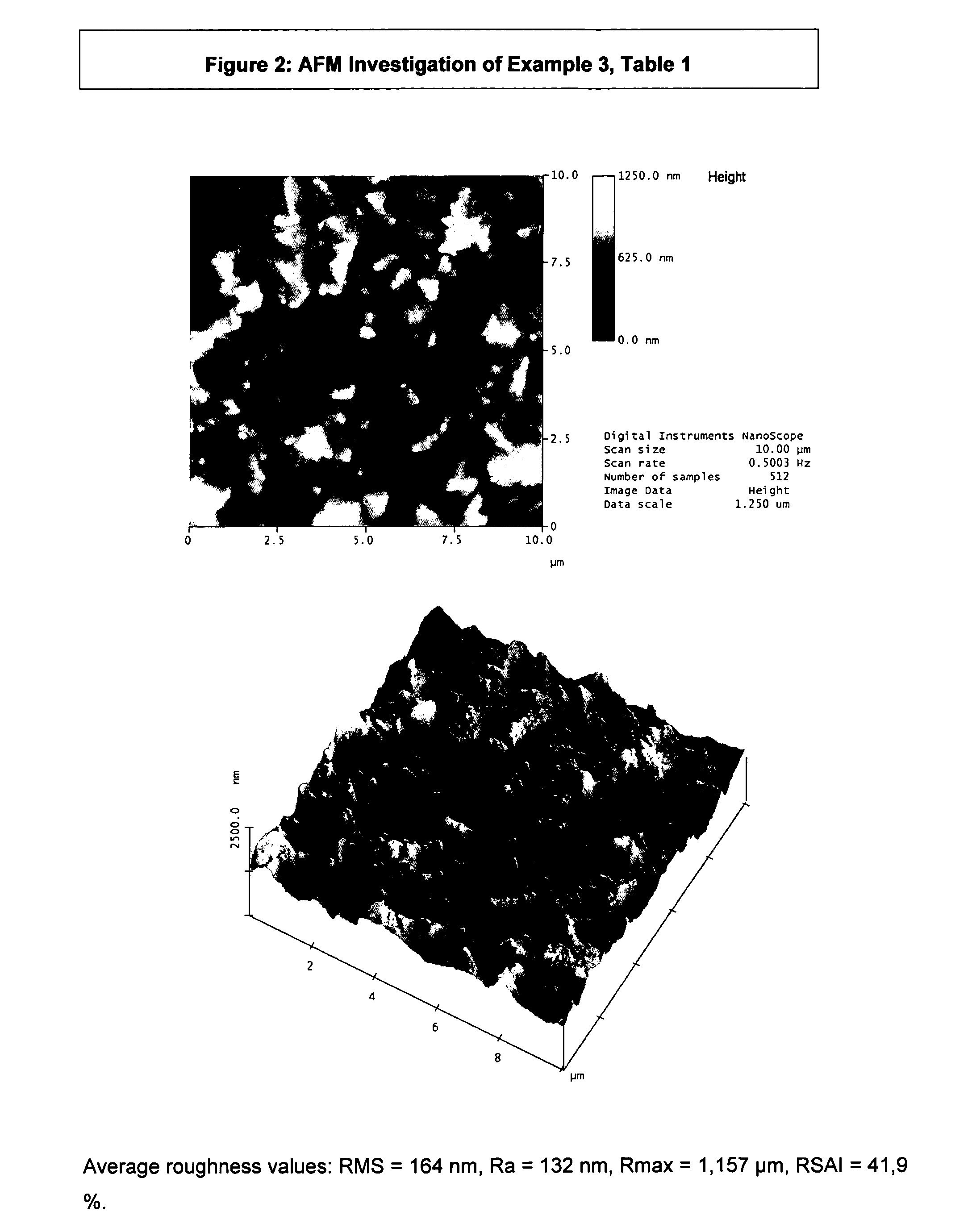Composition and Method for Improved Adhesion of Polymeric Materials to Copper or Copper Alloy Surfaces
- Summary
- Abstract
- Description
- Claims
- Application Information
AI Technical Summary
Benefits of technology
Problems solved by technology
Method used
Image
Examples
examples
[0046]After roughening the samples with the solution according to the invention (see Table 1 for details) they were coated with a solder mask. An Elpemer SD 2467 DG solder mask was applied with a semi-automatic screen printer. The coated samples were pre-cured for 40 minutes at 80° C.
[0047]A test pattern (Test Coupon G of IPC-2221) was created by using a UV exposure (Stouffer Step 11-12) followed by an aqueous alkaline image development in a 1% sodium carbonate solution at 30° C. in a spray module.
[0048]The test samples were rinsed with city water and finally rinsed with DI water. Afterwards the panels were dried and the final cure was done at 150° C. for 60 minutes. After the final cure the test samples were cut in half and treated either in an immersion tin process for 10 min at 65° C. (commercially available Stannatech process from Atotech Deutschland GmbH) or an electroless nickel-gold process (commercially available Aurotech process from Atotech Deutschland GmbH) consisting of ...
PUM
| Property | Measurement | Unit |
|---|---|---|
| Temperature | aaaaa | aaaaa |
| Time | aaaaa | aaaaa |
| Time | aaaaa | aaaaa |
Abstract
Description
Claims
Application Information
 Login to View More
Login to View More - R&D
- Intellectual Property
- Life Sciences
- Materials
- Tech Scout
- Unparalleled Data Quality
- Higher Quality Content
- 60% Fewer Hallucinations
Browse by: Latest US Patents, China's latest patents, Technical Efficacy Thesaurus, Application Domain, Technology Topic, Popular Technical Reports.
© 2025 PatSnap. All rights reserved.Legal|Privacy policy|Modern Slavery Act Transparency Statement|Sitemap|About US| Contact US: help@patsnap.com



